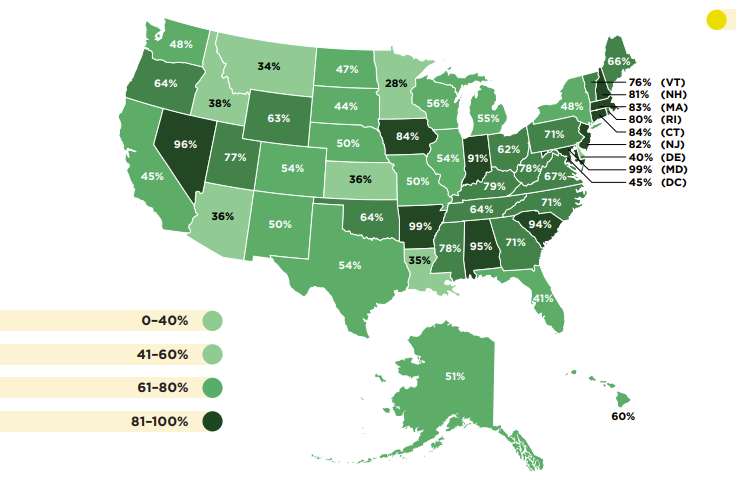By Doug Ward
Kansas ranks near the bottom in the percentage of schools offering foundational computer science education, according to a study by Code.org, the Computer Science Teacher Association, and the Expanding Computing Education Pathways Alliance.
Nationwide, 57.5% of schools offered a computer science class in 2023. Kansas was more than 20 percentage points below that average, with 36% of schools offering a foundational course. Only three states had lower percentages: Louisiana (35%), Montana (34%) and Minnesota (28%).
That has important implications for higher education. Many Kansas students who attend KU may have little understanding of how generative artificial intelligence and the large language models behind it work. That puts them at a disadvantage in understanding how to use generative AI effectively and how to approach it critically. Computer science courses aren't the only way students can learn about generative AI, but a growing number of states see those courses as crucial to the future.
Shuchi Grover, director of AI and education research at Looking Glass Ventures, delved into that at a recent speech at the National Academies of Sciences, Engineering, and Medicine.
“You want children to be equipped with understanding the world they live in,” Grover said. “Think about how much technology is all around them. Is it wise to completely leave them in the dark about what computing and AI is about?”

More than 10,000 schools nationwide do not offer a computer science course, the Code.org report says. Not surprisingly, schools with 500 students or fewer are the least likely to offer such a course, as are rural schools (which are often the same). The report noted a disparity in access for students of color, students with disabilities, and students who come from low-income families. Young women represented only 31% of students enrolled in foundational computer science courses.
Like Grover, the authors of the Code.org study make a compelling point about the connection between computer science and generative AI. The report says (in bold): “We cannot prepare students for a future with AI without teaching them the foundations of computer science.”
I'm all in favor of teaching digital literacy, computer literacy, and AI literacy. Students can learn those skills in many ways, though. Requiring a computer science seems less important than providing opportunities for students to explore computer science and improve their understanding of the digital world.
Efficiency vs. creativity
A couple of other elements of Grover’s talk at the National Academies are worth noting.
An audience member said that generative AI was generally portrayed in one of two ways: using it to do existing things better (efficiency) or to approach new problems in new ways (“to do better things”). Most studies have focused on efficiency, he said, to the exclusion of how we might apply generative AI to global challenges.
Grover said that she thought we definitely needed to focus on bigger issues. Efficiency has a role, though.
“This idea of efficiency in the school system is fraught,” Grover said. “Time fills up no matter how many efficiency tools you give them. And I think it’s unfair. Teachers all over the world, especially in the U.S. and I also see in India, are so overworked. ... I think it’s good that AI can help them with productivity and doing some of that drudgery – you know, the work that just fills up too much time – and take that off their plate.”
Schools in the United States have been slow to respond to generative AI, she said, because the system is so decentralized. Before the use and understanding of generative AI can spread, she said, “a teacher has to be able to use it and has to be able to see value.”
That will require listening.
“I think we need to listen to teachers – a lot. And maybe there’s something we can learn about where we need to focus our efforts. … Teachers need to have a voice in this – a big voice.”
Briefly …
Cheap AI ‘video scraping’ can now extract data from any screen recording, by Benj Edwards. Ars Technica (17 October 2024).
Stanford Researchers Use AI to Simulate Clinical Reasoning, by Abby Sourwine. Government Technology (10 October 2024).
Forget chat. AI that can hear, see and click is already here, by Melissa Heikkilä. MIT Technology Review (8 October 2024).
Colleges begin to reimagine learning in an AI world, by Beth McMurtrie. Chronicle of Higher Education (3 October 2024).
Secret calculator hack brings ChatGPT to the TI-84, enabling easy cheating, by Benj Edwards. Ars Technica (20 September 2024).
United Nations wants to treat AI with the same urgency as climate change, by Will Knight, Wired, via Ars Technica (20 September 2024).
Tagged artificial intelligence, digital literacy, future of higher education, digital learning